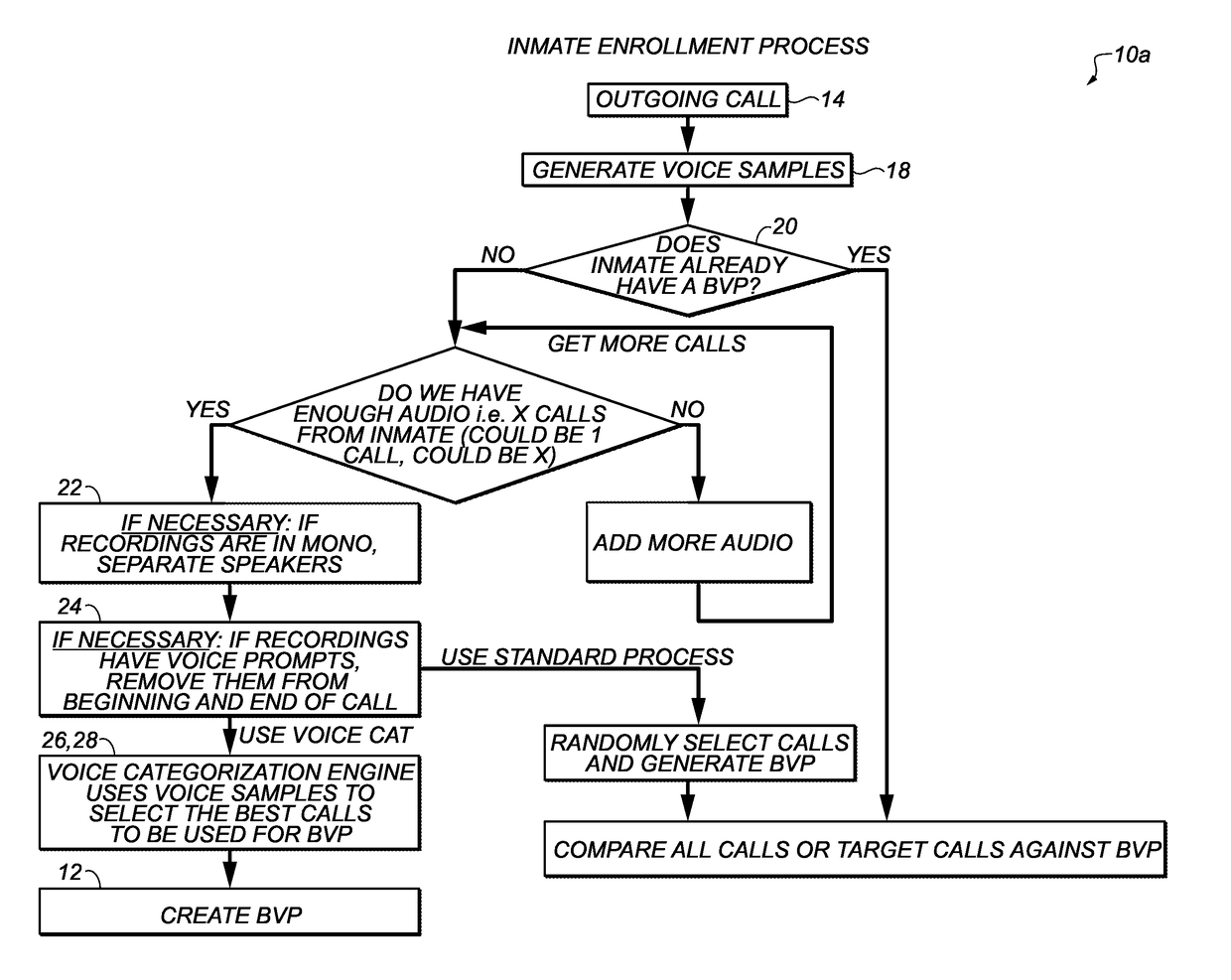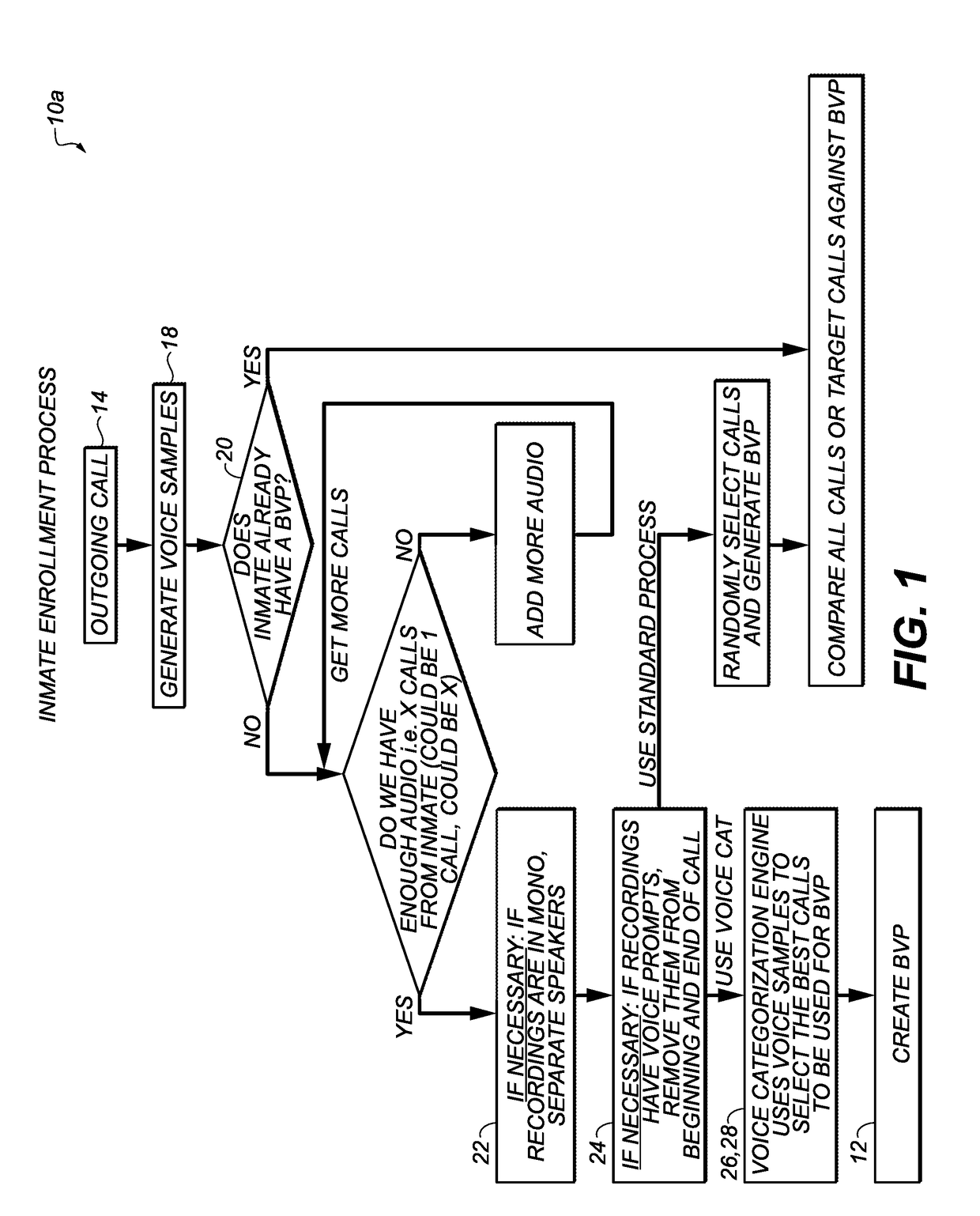Caller identification in a secure environment using voice biometrics
- Summary
- Abstract
- Description
- Claims
- Application Information
AI Technical Summary
Benefits of technology
Problems solved by technology
Method used
Image
Examples
Embodiment Construction
[0041]A novel system and method are disclosed to passively enroll and authenticate individuals inside secure facilities and persons-of-interest (POI) outside such facilities during both live telephone calls and pre-recorded calls (phone message), and to monitor continuously the identity of one or more speakers in a telephone call. The enrollment and authentication process, as described in greater detail hereinbelow, is completely invisible to the speakers.
[0042]The system cuts down on costs significantly since there is no need to formally enroll persons inside the facility, which typically requires substantial supervisor's time during the enrollment process. Further, the process is text and language independent. The only required element to create an initial BVP for a speaker is at least one call of more than 30 net seconds of speech for that particular speaker, although additional calls are necessary to creation of a high-quality BVP as described below.
[0043]A unique aspect of the ...
PUM
 Login to View More
Login to View More Abstract
Description
Claims
Application Information
 Login to View More
Login to View More - R&D
- Intellectual Property
- Life Sciences
- Materials
- Tech Scout
- Unparalleled Data Quality
- Higher Quality Content
- 60% Fewer Hallucinations
Browse by: Latest US Patents, China's latest patents, Technical Efficacy Thesaurus, Application Domain, Technology Topic, Popular Technical Reports.
© 2025 PatSnap. All rights reserved.Legal|Privacy policy|Modern Slavery Act Transparency Statement|Sitemap|About US| Contact US: help@patsnap.com



